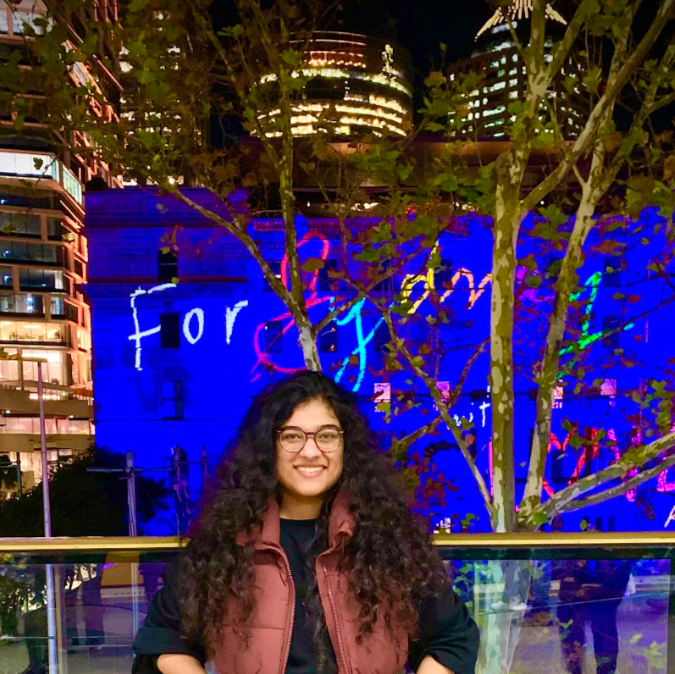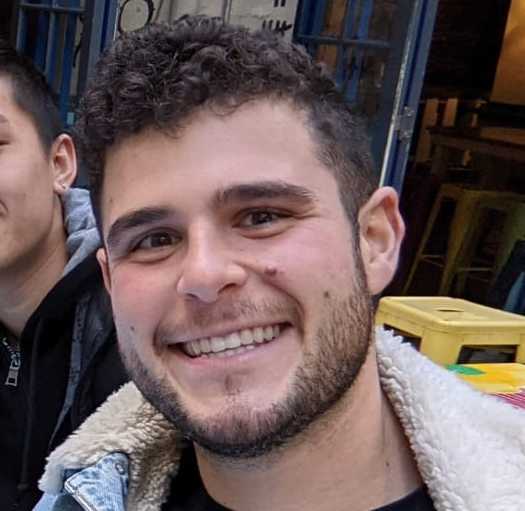Super Tour
Super Experience
Come visit one of the world’s most rarest penguins. This experience will be life changing!!
moreCome visit one of the world’s most rarest penguins. This experience will be life changing!!
["https://firebasestorage.googleapis.com/v0/b/freeguides-prod.appspot.com/o/assets%2Ftours%2F5GLxy91TH56kO7wz3itN%2Fmain_0.png?alt=media&token=2e613aea-24f9-4cc1-a740-c6167fcfe45c"]
["https://firebasestorage.googleapis.com/v0/b/freeguides-prod.appspot.com/o/assets%2Ftours%2F5GLxy91TH56kO7wz3itN%2Fmain_0.png?alt=media&token=2e613aea-24f9-4cc1-a740-c6167fcfe45c"]
[{"address":"Yellow-eyed Penguin Trust Princes Street, Dunedin Central, Dunedin, New Zealand","location":{"longitudeDelta":0.0421,"latitudeDelta":0.0922,"latitude":-45.87802800000001,"longitude":170.5020898},"media":[{"metadata":{"width":679,"height":452},"type":"img","version":1,"content":"https://firebasestorage.googleapis.com/v0/b/freeguides-prod.appspot.com/o/assets%2Ftours%2F5GLxy91TH56kO7wz3itN%2Fstop_0_0.png?alt=media&token=02e71d1d-439b-45de-aadc-17c1c1e933c9"},{"type":"text","content":"Yellow-eyed penguins / hoiho are one of the rarest penguins in the world and are only found in New Zealand (endemic).\n\nThe scientific name of the yellow-eyed penguin is Megadyptes antipodes which means big diver from the southern lands (mega = big, dyptes = diver, antipodes = southern lands).\n\nIts Māori name, hoiho (meaning noise shouter), was given because of its shrill call. The yellow-eyed penguin is also known as takaraka, and an ancient Māori name was tavora.\n\nThat’s not the only thing that makes this a most unusual penguin. Hoiho are not as social as other penguins. Very shy, they prefer to nest often well away and out of sight of their neighbours.\n\nHoiho are dependent on both marine and terrestrial habitats. The land provides nesting habitat as well as loafing, roosting and moulting space. The sea provides food for hoiho and is essential for dispersal and movement between terrestrial habitats."}]},{"address":"12 Wharf Street Wharf Street,null","location":{"longitudeDelta":0.006027313272056745,"latitudeDelta":0.005370885859022678,"latitude":-45.87987389480838,"longitude":170.50645400532053},"media":[{"metadata":{"width":543,"height":362},"type":"img","version":1,"content":"https://firebasestorage.googleapis.com/v0/b/freeguides-prod.appspot.com/o/assets%2Ftours%2F5GLxy91TH56kO7wz3itN%2Fstop_1_0.png?alt=media&token=0f88e910-023d-4cb4-bfe8-b73eb670885a"},{"type":"text","content":"The yellow-eyed penguin / hoiho is only found in New Zealand, nowhere else in the world!\n\nHoiho breed on the south-east coast of the South Island, Stewart Island / Rakiura, and the subantarctic Auckland / Maungahuka and Campbell Islands / Motu Ihupuku. The birds in the subantarctic are genetically distinct from those on the mainland, as they very rarely mix.\n\nThere are four major breeding regions on the mainland: Banks Peninsula, North Otago, Otago Peninsula and the Catlins.\n\nJuvenile hoiho tend to swim north from the breeding sites, sometimes dispersing as far as Taranaki and the Bay of Plenty.\n\nHoiho live in native coastal forests, scrub or dense flax, although they also use pasture and exotic vegetation. Nest sites are carefully selected – a suitable site should have a solid back such as a log, rock or flax plant, and provide shelter from harsh weather and the heat of the sun. The nest itself is a shallow bowl typically filled with twigs, grass and other vegetation. Sites are acces"},{"metadata":{"width":748,"height":750},"type":"img","version":1,"content":"https://firebasestorage.googleapis.com/v0/b/freeguides-prod.appspot.com/o/assets%2Ftours%2F5GLxy91TH56kO7wz3itN%2Fstop_1_1.png?alt=media&token=25f49923-beec-4f4a-b42b-b1767eef68e3"}]},{"address":"Customhouse Quay Customhouse Quay,Dunedin","location":{"longitudeDelta":0.006027313272056745,"latitudeDelta":0.005370846180582589,"latitude":-45.880284372002,"longitude":170.50614827203856},"media":[{"metadata":{"width":679,"height":452},"type":"img","version":1,"content":"https://firebasestorage.googleapis.com/v0/b/freeguides-prod.appspot.com/o/assets%2Ftours%2F5GLxy91TH56kO7wz3itN%2Fstop_2_0.png?alt=media&token=7e3c879f-066c-4135-89d3-24d13fa85a5c"},{"type":"text","content":"Hoiho face a number of threats at sea and on land which impact their survival and ultimately lead to a population decline. They have become casualties of human activities – historically they were hunted for food, fires destroyed vast tracts of habitat and people arrived with predators. Today these predators still roam the countryside and we continue to share the coastal space occupied by penguins, putting their lives at risk.\n\nTerrestrial impacts such as predation and land-use changes, can for the most part be managed. But even on offshore islands without terrestrial impacts, a decrease in the hoiho population is evident. This indicates that marine impacts are a major cause of decline.\n\nHoiho are considered to be ocean sentinels, helping us to understand the effects of pollution, over-fishing and climate change. They are highly sensitive to variation in the ocean, and sound the alarm on threats to marine ecosystems.\n\nThe cumulative impact of a range of different threats means that hoih"}]},{"address":"12 Wharf Street Wharf Street,null","location":{"longitudeDelta":0.006027313271999901,"latitudeDelta":0.005370805032576698,"latitude":-45.880710048851604,"longitude":170.50606819903612},"media":[{"metadata":{"width":639,"height":480},"type":"img","version":1,"content":"https://firebasestorage.googleapis.com/v0/b/freeguides-prod.appspot.com/o/assets%2Ftours%2F5GLxy91TH56kO7wz3itN%2Fstop_3_0.png?alt=media&token=0e04d193-edbf-4d66-98a5-de25503bf432"},{"type":"text","content":"Hoiho face a number of threats at sea and on land which impact their survival and ultimately lead to a population decline. They have become casualties of human activities – historically they were hunted for food, fires destroyed vast tracts of habitat and people arrived with predators. Today these predators still roam the countryside and we continue to share the coastal space occupied by penguins, putting their lives at risk.\n\nTerrestrial impacts such as predation and land-use changes, can for the most part be managed. But even on offshore islands without terrestrial impacts, a decrease in the hoiho population is evident. This indicates that marine impacts are a major cause of decline.\n\nHoiho are considered to be ocean sentinels, helping us to understand the effects of pollution, over-fishing and climate change. They are highly sensitive to variation in the ocean, and sound the alarm on threats to marine ecosystems.\n\nThe cumulative impact of a range of different threats means that hoih"}]},{"address":"1 Birch Street Birch Street,Dunedin","location":{"longitudeDelta":0.006027313271999901,"latitudeDelta":0.005370768293296635,"latitude":-45.88109011471147,"longitude":170.50630841804343},"media":[{"metadata":{"width":678,"height":452},"type":"img","version":1,"content":"https://firebasestorage.googleapis.com/v0/b/freeguides-prod.appspot.com/o/assets%2Ftours%2F5GLxy91TH56kO7wz3itN%2Fstop_4_0.png?alt=media&token=f07e224a-9244-49e8-9be2-c99c7e583dc3"},{"type":"text","content":"The Trust and other conservation organisations, especially the Department of Conservation, work to help hoiho by safeguarding their habitat (buying land for protection such as our reserve at Long Point/Irahuka), trapping mammalian predators, planting trees and shrubs to improve habitat, providing nesting opportunities, and advocating for penguin conservation. This is in addition to our monitoring work with the penguins and research into impacts on the population.\n\nThe Yellow-eyed Penguin Trust assists the penguins by alleviating some of the pressures we humans have imposed on them. Once free of these threats, yellow-eyed penguins are capable of doing the rest. This is a rewarding partnership, which succeeds if we do our bit."}]},{"address":"2 Birch Street Birch Street,Dunedin","location":{"longitudeDelta":0.03209970557594488,"latitudeDelta":0.028602971763341145,"latitude":-45.88141551799581,"longitude":170.50535353306947},"media":[{"type":"text","content":"You can learn more at:\n\nhttps://www.yellow-eyedpenguin.org.nz/"},{"metadata":{"width":550,"height":412},"type":"img","version":1,"content":"https://firebasestorage.googleapis.com/v0/b/freeguides-prod.appspot.com/o/assets%2Ftours%2F5GLxy91TH56kO7wz3itN%2Fstop_5_0.png?alt=media&token=ccf88b83-7b4a-4cf7-a0c8-ea60b2ca358d"}]}]
4.00
0

Nature
2
hours
14
times run
#
83
Rank
Come visit one of the world’s most rarest penguins. This experience will be life changing!!
4.0
Rating
Nature
2
Hours
14
TOURS COMPLETED
#
83
rank
≈
0 kms
Language
English
Start Location
Tags
This is some text inside of a div block.
On-tour Inclusion and Exclusion
Inclusions
Self-guided
Anytime, Anywhere
Creates by locals
Photo-taking assist
Video-taking assist
Exclusion
Drinking water
Sunglass and skin sunblock
Thank you! Your submission has been received!
Oops! Something went wrong while submitting the form.
9/7/2022


Priyanshi Srivastava
7
Sep
,
2022
3
3
3/11/2022


Daniel Wasilewsky
11
Mar
,
2022
5
5
Actually so fun! So cute
Thank you! Your submission has been received!
Oops! Something went wrong while submitting the form.
Preview
[{"address":"Yellow-eyed Penguin Trust Princes Street, Dunedin Central, Dunedin, New Zealand","location":{"longitudeDelta":0.0421,"latitudeDelta":0.0922,"latitude":-45.87802800000001,"longitude":170.5020898},"media":[{"metadata":{"width":679,"height":452},"type":"img","version":1,"content":"https://firebasestorage.googleapis.com/v0/b/freeguides-prod.appspot.com/o/assets%2Ftours%2F5GLxy91TH56kO7wz3itN%2Fstop_0_0.png?alt=media&token=02e71d1d-439b-45de-aadc-17c1c1e933c9"},{"type":"text","content":"Yellow-eyed penguins / hoiho are one of the rarest penguins in the world and are only found in New Zealand (endemic).\n\nThe scientific name of the yellow-eyed penguin is Megadyptes antipodes which means big diver from the southern lands (mega = big, dyptes = diver, antipodes = southern lands).\n\nIts Māori name, hoiho (meaning noise shouter), was given because of its shrill call. The yellow-eyed penguin is also known as takaraka, and an ancient Māori name was tavora.\n\nThat’s not the only thing that makes this a most unusual penguin. Hoiho are not as social as other penguins. Very shy, they prefer to nest often well away and out of sight of their neighbours.\n\nHoiho are dependent on both marine and terrestrial habitats. The land provides nesting habitat as well as loafing, roosting and moulting space. The sea provides food for hoiho and is essential for dispersal and movement between terrestrial habitats."}]},{"address":"12 Wharf Street Wharf Street,null","location":{"longitudeDelta":0.006027313272056745,"latitudeDelta":0.005370885859022678,"latitude":-45.87987389480838,"longitude":170.50645400532053},"media":[{"metadata":{"width":543,"height":362},"type":"img","version":1,"content":"https://firebasestorage.googleapis.com/v0/b/freeguides-prod.appspot.com/o/assets%2Ftours%2F5GLxy91TH56kO7wz3itN%2Fstop_1_0.png?alt=media&token=0f88e910-023d-4cb4-bfe8-b73eb670885a"},{"type":"text","content":"The yellow-eyed penguin / hoiho is only found in New Zealand, nowhere else in the world!\n\nHoiho breed on the south-east coast of the South Island, Stewart Island / Rakiura, and the subantarctic Auckland / Maungahuka and Campbell Islands / Motu Ihupuku. The birds in the subantarctic are genetically distinct from those on the mainland, as they very rarely mix.\n\nThere are four major breeding regions on the mainland: Banks Peninsula, North Otago, Otago Peninsula and the Catlins.\n\nJuvenile hoiho tend to swim north from the breeding sites, sometimes dispersing as far as Taranaki and the Bay of Plenty.\n\nHoiho live in native coastal forests, scrub or dense flax, although they also use pasture and exotic vegetation. Nest sites are carefully selected – a suitable site should have a solid back such as a log, rock or flax plant, and provide shelter from harsh weather and the heat of the sun. The nest itself is a shallow bowl typically filled with twigs, grass and other vegetation. Sites are acces"},{"metadata":{"width":748,"height":750},"type":"img","version":1,"content":"https://firebasestorage.googleapis.com/v0/b/freeguides-prod.appspot.com/o/assets%2Ftours%2F5GLxy91TH56kO7wz3itN%2Fstop_1_1.png?alt=media&token=25f49923-beec-4f4a-b42b-b1767eef68e3"}]},{"address":"Customhouse Quay Customhouse Quay,Dunedin","location":{"longitudeDelta":0.006027313272056745,"latitudeDelta":0.005370846180582589,"latitude":-45.880284372002,"longitude":170.50614827203856},"media":[{"metadata":{"width":679,"height":452},"type":"img","version":1,"content":"https://firebasestorage.googleapis.com/v0/b/freeguides-prod.appspot.com/o/assets%2Ftours%2F5GLxy91TH56kO7wz3itN%2Fstop_2_0.png?alt=media&token=7e3c879f-066c-4135-89d3-24d13fa85a5c"},{"type":"text","content":"Hoiho face a number of threats at sea and on land which impact their survival and ultimately lead to a population decline. They have become casualties of human activities – historically they were hunted for food, fires destroyed vast tracts of habitat and people arrived with predators. Today these predators still roam the countryside and we continue to share the coastal space occupied by penguins, putting their lives at risk.\n\nTerrestrial impacts such as predation and land-use changes, can for the most part be managed. But even on offshore islands without terrestrial impacts, a decrease in the hoiho population is evident. This indicates that marine impacts are a major cause of decline.\n\nHoiho are considered to be ocean sentinels, helping us to understand the effects of pollution, over-fishing and climate change. They are highly sensitive to variation in the ocean, and sound the alarm on threats to marine ecosystems.\n\nThe cumulative impact of a range of different threats means that hoih"}]},{"address":"12 Wharf Street Wharf Street,null","location":{"longitudeDelta":0.006027313271999901,"latitudeDelta":0.005370805032576698,"latitude":-45.880710048851604,"longitude":170.50606819903612},"media":[{"metadata":{"width":639,"height":480},"type":"img","version":1,"content":"https://firebasestorage.googleapis.com/v0/b/freeguides-prod.appspot.com/o/assets%2Ftours%2F5GLxy91TH56kO7wz3itN%2Fstop_3_0.png?alt=media&token=0e04d193-edbf-4d66-98a5-de25503bf432"},{"type":"text","content":"Hoiho face a number of threats at sea and on land which impact their survival and ultimately lead to a population decline. They have become casualties of human activities – historically they were hunted for food, fires destroyed vast tracts of habitat and people arrived with predators. Today these predators still roam the countryside and we continue to share the coastal space occupied by penguins, putting their lives at risk.\n\nTerrestrial impacts such as predation and land-use changes, can for the most part be managed. But even on offshore islands without terrestrial impacts, a decrease in the hoiho population is evident. This indicates that marine impacts are a major cause of decline.\n\nHoiho are considered to be ocean sentinels, helping us to understand the effects of pollution, over-fishing and climate change. They are highly sensitive to variation in the ocean, and sound the alarm on threats to marine ecosystems.\n\nThe cumulative impact of a range of different threats means that hoih"}]},{"address":"1 Birch Street Birch Street,Dunedin","location":{"longitudeDelta":0.006027313271999901,"latitudeDelta":0.005370768293296635,"latitude":-45.88109011471147,"longitude":170.50630841804343},"media":[{"metadata":{"width":678,"height":452},"type":"img","version":1,"content":"https://firebasestorage.googleapis.com/v0/b/freeguides-prod.appspot.com/o/assets%2Ftours%2F5GLxy91TH56kO7wz3itN%2Fstop_4_0.png?alt=media&token=f07e224a-9244-49e8-9be2-c99c7e583dc3"},{"type":"text","content":"The Trust and other conservation organisations, especially the Department of Conservation, work to help hoiho by safeguarding their habitat (buying land for protection such as our reserve at Long Point/Irahuka), trapping mammalian predators, planting trees and shrubs to improve habitat, providing nesting opportunities, and advocating for penguin conservation. This is in addition to our monitoring work with the penguins and research into impacts on the population.\n\nThe Yellow-eyed Penguin Trust assists the penguins by alleviating some of the pressures we humans have imposed on them. Once free of these threats, yellow-eyed penguins are capable of doing the rest. This is a rewarding partnership, which succeeds if we do our bit."}]},{"address":"2 Birch Street Birch Street,Dunedin","location":{"longitudeDelta":0.03209970557594488,"latitudeDelta":0.028602971763341145,"latitude":-45.88141551799581,"longitude":170.50535353306947},"media":[{"type":"text","content":"You can learn more at:\n\nhttps://www.yellow-eyedpenguin.org.nz/"},{"metadata":{"width":550,"height":412},"type":"img","version":1,"content":"https://firebasestorage.googleapis.com/v0/b/freeguides-prod.appspot.com/o/assets%2Ftours%2F5GLxy91TH56kO7wz3itN%2Fstop_5_0.png?alt=media&token=ccf88b83-7b4a-4cf7-a0c8-ea60b2ca358d"}]}]
Included
- Self-Guided experience
- Run anytime, anywhere, 24/7, with your own phone
- Self-Guided experience
Excluded
- Additional expenses such as food and drink
- Transport
Meet Your Guide
Hi! My name is Bruce and I love travelling the world. I am based in Northern Beaches of Sydney and I love beaches and burgers!!
Meet Your Guide
Hi! My name is Bruce and I love travelling the world. I am based in Northern Beaches of Sydney and I love beaches and burgers!!
3
5
No items found.
Thank you! Your submission has been received!
Oops! Something went wrong while submitting the form.
Questions
No questions yet
Similar Experiences

Self-Guided
Use your phone to explore a new city or your own home town.

Anywhere Anytime
You’re the boss. Start the experience virtually or at the start location. Initiate at a time that works for you.

Created by local experts
Each experience is hand made by a real local or organisation who is uniquely knowledgeable.

Extend the relationship with your guests beyond the lobby and into the real world
Subscribe to Our Newsletter
Thank you! Your submission has been received!
Oops! Something went wrong while submitting the form.
Copyrights ©XXXX FreeGuides. All rights reserved.







.svg)
.svg)
.svg)
.svg)